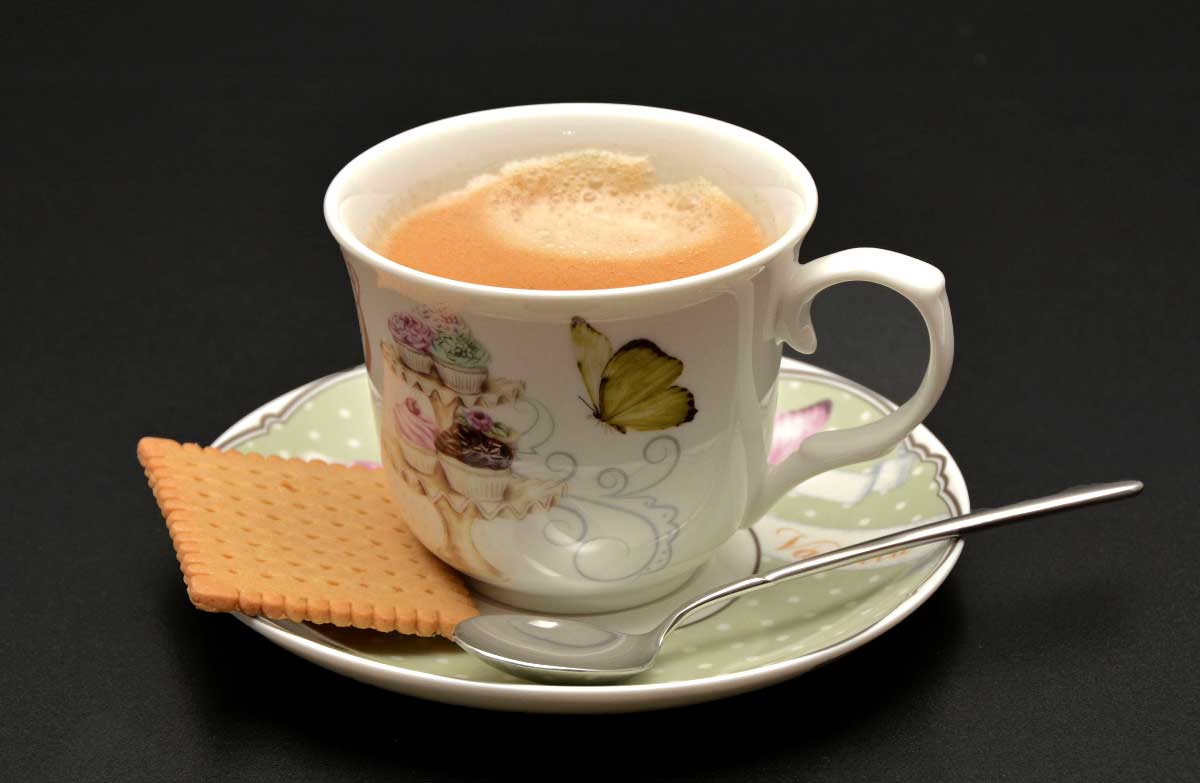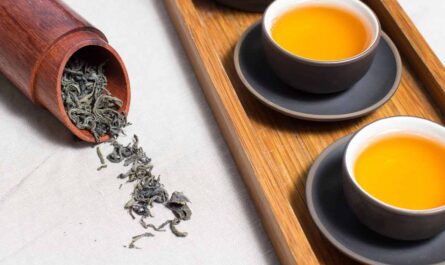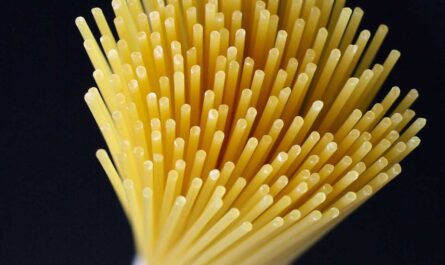What are some of the advantages and disadvantages of drinking tea with milk? Indulging in the seemingly innocuous act of sipping tea laced with milk may be a cherished ritual for many, but beneath the surface of this popular beverage lies a tapestry of potential drawbacks. While the classic pairing of tea and milk is a cultural cornerstone for numerous communities, it is crucial to unravel the myriad disadvantages that accompany this delightful fusion. This article will share some disadvantages as well as advantages of drinking tea with milk. Keep reading.
Disadvantages of drinking tea with milk
Indulging in the seemingly innocuous act of sipping tea laced with milk may be a cherished ritual for many, but beneath the surface of this popular beverage lies a tapestry of potential drawbacks. While the classic pairing of tea and milk is a cultural cornerstone for numerous communities, it is crucial to unravel the myriad disadvantages that accompany this delightful fusion. The seemingly innocuous act of drinking tea with milk reveals a labyrinth of potential disadvantages, spanning from molecular intricacies to cultural dilemmas. Each cup becomes a delicate balance between flavor preferences, health considerations, and cultural authenticity, urging individuals to navigate the nuanced terrain of tea consumption with heightened awareness.
1. Oxidative Stress
The seemingly innocuous act of adding milk to tea unveils a potential cascade of consequences, chief among them being the elevation of oxidative stress within the body’s intricate ecosystem. A ballet of chemical reactions unfolds as tea polyphenols, those heralded antioxidants, engage in a complex tango with milk proteins. This dance, however, is not one of harmony; rather, it raises the curtain on a potential diminution of antioxidant absorption. The synergy, or lack thereof, between these seemingly disparate elements forces us to confront the reality that the health benefits traditionally attributed to tea consumption may be subject to a nuanced interplay that demands our consideration for overall well-being.
2. Reduced Antioxidant Efficacy
Tea, that venerable elixir celebrated for its antioxidant prowess, finds its radiant armor dulled when entwined with the creamy embrace of milk. The molecular choreography at play involves the binding of catechins—those potent guardians of cellular health—with the proteins resident in milk. The consequence of this intricate partnership is the formation of complexes, restricting the free-spirited bioavailability of these antioxidants. It is a subtle but undeniably significant compromise, an understated negotiation between tea and milk that hints at a potential diminishment of the health advantages one might expect from a steaming cup of antioxidant-rich tea.
3. Disrupted Digestive Harmony
The seemingly innocuous marriage of tea and milk, embraced by many as a comforting alliance, unravels a potential upheaval in the delicate ballet of the digestive system. The introduction of dairy into this nuanced symphony can serve as a discordant note for certain individuals, acting as a potent trigger for lactose intolerance. The consequences of this digestive dissonance manifest in the uncomfortable trio of bloating, gas, and general discomfort. This unexpected physiological repercussion adds a layer of contemplation for those who seek the perfect infusion of tea without unsettling the delicate equilibrium of their gastrointestinal well-being.
4. Potential Allergenicity
Beneath the surface of the seemingly innocuous alliance between tea and milk lies an underexplored realm of potential allergenicity. Milk, a culinary chameleon celebrated for its versatility, harbors proteins, notably casein, and whey, that stand as known allergens for a subset of individuals. The seemingly mundane act of indulging in a cup of tea adorned with milk can unfurl a Pandora’s box of allergic reactions. This underscores the imperative for heightened awareness, urging a reconsideration of this beverage amalgamation in the context of individual dietary sensitivities.
5. Culinary Compromises
The symphony of flavors and aromatic subtleties that define various tea varieties may find themselves entangled in a culinary compromise when confronted with the luscious embrace of milk. The intricate dance of taste and fragrance, celebrated in the pure essence of tea, risks being overshadowed by the rich, creamy undertones of milk. This culinary compromise, a subtle shift in the gustatory landscape, beckons tea enthusiasts to reflect on the delicate equilibrium between honoring tradition and embarking on sensory exploration. The seemingly benign act of marrying tea with milk transforms into a nuanced decision, prompting a contemplative exploration of how this alliance alters the very essence of the tea-drinking experience.
6. Varied Caffeine Impact
In the intricate dance of tea and milk, a lesser-known note surfaces regarding caffeine dynamics. Tea, with its intrinsic caffeine allure, transforms when joined by the creamy partner that is milk. The caffeine molecules, once solo performers, find themselves entwined with the proteins in milk, a partnership that alters the absorption kinetics. This subtle but consequential shift in the caffeine narrative holds particular significance for those with caffeine sensitivity or those meticulously regulating their intake. The union of tea and milk demands a nuanced approach, an understanding that the amalgamation is more than the sum of its parts, with implications reaching beyond the sensory realm into the realm of physiological impact.
7. Potential for Weighty Woes
In the intricate calculus of weight management, the seemingly innocuous act of incorporating milk into tea introduces a potential stumbling block. The caloric payload from milk, potentially exacerbated by the addition of sweeteners, stands as a silent saboteur, undermining earnest efforts to maintain a calorie deficit. This weighty consideration introduces a layer of complexity for those navigating the delicate balance between the hedonistic pleasure of flavor indulgence and the disciplined realm of dietary control. The seemingly harmless addition of milk to tea transforms into a strategic decision, demanding a meticulous evaluation of one’s dietary landscape.
8. Unanticipated Flavor Alterations
For the discerning palates that revel in the nuanced tapestry of flavors woven by different tea varieties, the addition of milk heralds an unwelcome intrusion. The subtleties and delicate undertones, whether nestled in the robustness of black tea or the delicate notes of green or herbal infusions, risk being overshadowed by the rich, creamy embrace of milk. This unanticipated flavor alteration prompts a soul-searching reevaluation of one’s palate preferences and the pursuit of a harmonious tea-drinking experience. The act of marrying tea with milk transforms from a routine gesture to a deliberate choice, inviting tea connoisseurs to introspect on how this fusion shapes their sensory journey.
9. Potential for Insulin Sensitivity Impact
In the evolving landscape of health research, nuanced revelation surfaces concerning the potential impact of combining tea and milk on insulin sensitivity. As emerging studies delve into the intricate interplay between the compounds inherent in tea and the proteins residing in milk, a subtle but significant influence on insulin dynamics takes center stage. For individuals contending with conditions linked to insulin resistance, this newfound revelation adds a layer of consideration, prompting a thoughtful reevaluation of dietary choices in the pursuit of metabolic equilibrium.
10. Nutritional Dilution
Amidst the accolades showered upon tea for its nutritional richness, an understated concern emerges when it partners with milk—a potential dilution of its nutritional impact. The addition of milk, while introducing its creamy essence, risks overshadowing the intricate array of beneficial compounds inherent in tea. This nutritional dilution sparks contemplation, urging aficionados to strike a delicate balance between personal flavor preferences and the unwavering pursuit of a beverage choice that aligns with health-conscious sensibilities.
11. Risk of Adverse Reactions
In the realm of therapeutic libations, the integration of tea with milk introduces an unforeseen caveat—an elevated risk of adverse reactions, particularly for individuals predisposed to such responses. The revered therapeutic compounds inherent in tea, known for their potential positive impact, may undergo an enigmatic transformation when entangled with the components of milk. This subtle but significant risk underscores the necessity for individualized dietary choices, emphasizing the importance of a discerning approach for those navigating the delicate balance between the purported benefits of tea and the potential pitfalls introduced by milk.
12. Potential for Disrupted Bioavailability
The delicate choreography between the diverse compounds of tea and the proteins within milk unfurls a potential subplot—the risk of disrupted bioavailability for certain nutrients. As tea compounds engage in a molecular dance with milk proteins within the digestive tract, the intricate formation of complexes may wield an influence on the absorption of vital vitamins and minerals. This nuanced consideration adds a layer of intricacy to the nutritional impact of tea with milk, accentuating the need for a holistic understanding of dietary choices and their potential implications on the body’s intricate processes.
13. Potential for Sleep Disruption
For those seeking the solace of a tranquil cup of tea as a prelude to restful slumber, the introduction of milk unveils an unexpected obstacle. The delicate interplay between tea’s inherent caffeine content and the purportedly relaxing properties of milk poses a potential disruption to sleep patterns for select individuals. This consideration becomes a poignant reminder of the need for mindful consumption, especially as the evening descends, emphasizing the intricate balance between the comforting ritual of tea drinking and the pursuit of a peaceful night’s sleep.
14. Cultural Authenticity Dilemma
In the symphony of tea culture, the amalgamation of tea and milk unveils a dilemma echoing through the corridors of cultural authenticity. For purists staunchly adhering to time-honored tea-drinking practices, the addition of milk stands as a deviation from the authentic essence of tea. This cultural authenticity dilemma becomes a contemplative juncture, urging individuals to reflect on the delicate equilibrium between cultural reverence and personal preferences, transcending the boundaries of tradition and modern adaptations.
15. Potential for Unwanted Additives
The convenience of commercially available tea blends incorporating milk introduces an undercurrent of concern—the potential influx of unwanted additives. Pre-packaged tea with milk options, aimed at streamlining the tea preparation process, may inadvertently bring with them the baggage of additional sugars, artificial flavors, and preservatives. This potential for unwanted additives places a premium on scrutinizing the ingredient list, particularly for those steering their tea choices toward the realms of natural and wholesome indulgence.
16. Environmental Footprint Consideration
Beyond the personal sphere of health, the seemingly innocuous act of sipping tea with milk unravels a tapestry of environmental considerations. The expansive dairy industry, often entangled with significant environmental impact, adds an ethical layer to the simple ritual of tea consumption. This environmental footprint consideration becomes a clarion call for a reflective pause, prompting individuals to contemplate the broader consequences of their dietary choices and the intricate dance between personal indulgence and global sustainability efforts.
17. Altered Aesthetic Appeal
Tea, an elixir revered not only for its taste but also for the visual spectacle it often presents, transforms aesthetic appeal when united with milk. The mesmerizing swirls of tea leaves unfurling in hot water, a sensory delight for countless tea enthusiasts, face potential obscurity behind the opaque veil of milk. This altered aesthetic prompts a contemplative pause, encouraging aficionados to reflect on the sensory dimensions of the tea-drinking experience. The once-translucent canvas of steeping tea now bears the imprint of milk’s opulence, prompting a nuanced consideration of the visual allure entwined with the act of tea consumption.
18. Potential for Blood Pressure Perturbation
For those meticulously monitoring their blood pressure, the seemingly innocuous combination of tea and milk unveils a potential perturbation. While tea, with its established cardiovascular benefits, is often heralded for its positive impact, the introduction of milk adds a layer of complexity. The intricate dance between tea’s virtues and the potential counteraction by milk prompts a personalized approach to tea consumption. This nuanced consideration becomes paramount for individuals prioritizing cardiovascular health, accentuating the need for a tailored dietary strategy in the pursuit of well-being.

19. Potential for Acidic Agitation
Beyond the realm of taste and dietary considerations, the introduction of milk into tea introduces a potential pH imbroglio. The once-alkaline character of tea may tilt towards acidity, a shift that could prove discomforting for those predisposed to acid reflux or possessing heightened gastrointestinal sensitivity. This acidic agitation, a consequence of the seemingly innocuous tea-milk amalgamation, places a premium on understanding the delicate interplay of acidity. For those seeking a harmonious relationship between the ritualistic joy of tea consumption and digestive well-being, this subtle shift in pH dynamics demands meticulous consideration.
20. Dental Dilemmas
Beyond the realms of digestion, the seemingly innocent concoction of tea and milk unveils an unforeseen adversary in the realm of dental health. The tannins, those astringent compounds lauded for their antioxidant properties in tea, find an unholy ally in the proteins abundant in milk. Together, they conspire to enhance the formation of plaque on teeth, presenting an unexpected dental dimension to the multifaceted disadvantages of this beloved beverage. The sipping ritual, often thought of as a comforting routine, becomes a potential contributor to the oral conundrum, urging a reconsideration of the dental implications entwined with the simple pleasure of tea with milk.
21. Caloric Conundrum
For the calorie-conscious connoisseur, the addition of milk to tea introduces a conundrum that transcends flavor profiles. While tea stands as a beacon of low-calorie refreshment, the incorporation of milk acts as an uninvited guest, significantly augmenting the energy content of this once-pure elixir. This nutritional nuance becomes a pivotal point of consideration for those navigating the labyrinth of dietary choices, especially those with a discerning eye on health or weight management goals. The seemingly innocuous act of enhancing tea with milk transforms into a nuanced decision, prompting a recalibration of choices in the quest for a balance between flavor and nutritional prudence.
22. Impaired Nutrient Absorption
The marriage of tea and milk, while seemingly innocuous, embarks on a journey beyond the realm of antioxidants, encroaching upon the absorption of essential nutrients. Here, the antagonist is casein, an unassuming yet potent protein derived from milk. It insidiously binds with minerals, chief among them iron, casting a shadow upon their bioavailability. This nuanced interference, a delicate ballet at the molecular level, places before us a conundrum: the very act of crafting a comforting cup of tea with the addition of milk introduces a potential hurdle in the seamless assimilation of vital nutrients. The delicate balance in this ritual becomes a poignant reminder of the intricate relationships governing the nutritional landscape.
Advantages of drinking tea with milk
1. Rich Culinary Tradition
Embarking on the sensory expedition of sipping tea embellished with the velvety infusion of milk is not merely a gustatory indulgence but an odyssey into the annals of a rich culinary tradition that spans the tapestry of cultures worldwide. This venerable practice, rooted in antiquity, has intricately woven itself into the very fabric of diverse societies. Each cultural iteration, from the spice-laden chai of India to the genteel British afternoon tea, imparts a unique twist, transforming the simple act of tea consumption into a cultural phenomenon that transcends time.
2. Sensory Symphony
The harmonious marriage of tea and milk orchestrates a symphony that extends beyond taste, captivating the senses in an aromatic crescendo. The fragrant leaves of diverse tea varieties engage in a delicate dance with the creamy richness of milk, creating an olfactory ballet that commences even before the initial sip. This symphony, a fusion of aroma and flavor, extends its allure to the visual realm, where swirling patterns emerge as milk gracefully diffuses into the tea, presenting a visual feast that complements the gustatory experience.
3. Health Harmony
Contrary to the misconceived notion that the addition of milk dilutes the health benefits of tea, the amalgamation of these two elixirs forms a health harmony. The synergistic coupling amplifies the antioxidant properties inherent in tea, bestowing a holistic boost to cardiovascular health and fortifying the immune system. Furthermore, the infusion of calcium and vitamin D from milk contributes to the fortification of bones and teeth, thereby establishing a comprehensive approach to overall well-being.
4. Versatile Elixir
Tea with milk, a versatile elixir, unfurls a tapestry of flavors and infusions across a spectrum of tea varieties. From the robust intensity of black tea to the nuanced subtleties of green tea, the addition of milk seamlessly integrates with a myriad of tea types. This versatility transcends the cup, extending to diverse preparation methods, encompassing the elaborate rituals of a traditional Japanese tea ceremony to the brisk preparation of a quintessential English cuppa. The result is a vast array of milk-infused teas catering to every conceivable palate and occasion.
5. Soothing Rituals
Beyond its delectable taste and healthful attributes, the act of sipping tea with milk unfolds as a soothing ritual, an enduring practice that transcends temporal boundaries. Whether partaking in the calming embrace of chamomile before the hushed hours of bedtime or invigorating one’s senses with the spiced complexities of masala chai at dawn, these rituals serve as poignant interludes, creating sanctuaries of serenity. The warm caress of the cup, coupled with the familiarity of the practiced motion, elevates the seemingly mundane act into a soul-soothing experience. Success Principles PLR Package Review, Bonus, Earning
6. Cultural Tapestry
Participating in the ceremonial act of tea with milk unfurls a cultural tapestry, weaving together threads of tradition, history, and social connections into a harmonious tableau. Across diverse cultures, the shared cup of tea becomes a symbol of hospitality, camaraderie, or even negotiation. The ceremonial aspects of serving tea with milk add layers of significance, fostering a sense of connection to one’s roots and forging enduring bonds across the epochs of generations.
7. Customizable Indulgence
The allure of tea with milk lies not only in its inherent flavors but in its customizable nature, beckoning individuals to sculpt their indulgence according to their unique predilections. Whether finely adjusting the tea-to-milk ratio, experimenting with a kaleidoscope of tea blends, or introducing exotic spices and sweeteners, this beverage metamorphoses into a canvas for self-expression. Such customization caters not only to the diversity of tastes but also beckons creativity into the hallowed realm of tea appreciation.
8. Mindful Pause
In a world ceaselessly in motion, the act of savoring tea with milk extends an invitation to a mindful pause—a fleeting yet profound moment to disentangle oneself from the relentless hustle and embrace the richness of the present. The meticulousness of the preparation process, from the gentle boil of water to the artful blending of tea and milk, demands attention and intention. This mindful pause becomes a conduit to mindfulness, grounding individuals in the immediacy of the moment and fostering mental clarity amidst the cacophony of life’s incessant demands.
9. Culinary Alchemy
The liaison between tea and milk unfolds as a gastronomic alchemy, where the seemingly disparate elements undergo a transformation that transcends their characteristics. The tannins inherent in tea, when in congress with the proteins in milk, engage in a harmonious ballet that mitigates the astringency of certain teas. This alchemical interplay enriches the overall drinking experience, revealing layers of nuanced flavor and texture that might otherwise remain concealed. Tea, Coffee, Energy Drinks, Juice, Beverage, Smoothie, and more
10. Aesthetic Indulgence
Beyond the realm of gustatory delights, tea with milk metamorphoses into an aesthetic indulgence that transcends mere consumption, elevating the act of drinking into a veritable art form. The vessel, be it the delicate porcelain cups of a time-honored Chinese tea ceremony or the rustic charm of a weathered mug, assumes a role as integral to the experience as the beverage it cradles. This aesthetic symbiosis amplifies the overall pleasure, transforming a seemingly simple drink into a multisensory journey that engages not only the palate but also the soul.
More Interesting Articles
- Secrets Why Japanese Green Tea is Good for Health
- How Drinking Green Tea Can Help Lower Cholesterol
- What is the Best Water to Make Tea or Coffee at Home?
- Health Benefits of Drinking Black Coffee vs Green Tea
- Green Tea for Acne Treatment: Benefits, Uses, Forms
- 9 Great Health Benefits of Matcha Green Tea Powder
- 5 Tips on How to Make Iced Tea with Tea Bags Instantly
- 33 Health Benefits of Drinking Green Tea in the Morning
- 20 Great Health Benefits of Lemongrass and Ginger Tea
- Matcha Green Tea Powder All Natural Weight Loss Metabolism Booster And Diet
- 15 Hibiscus Tea Proven Benefits with Some Side Effects
- 12 Benefits of Chamomile Tea in Weight Loss & More
- 17 Incredible Blue Butterfly Pea Flower Tea Health Benefits
- Teavana Peach Citrus White Tea Facts To Know Well
- 23 Healthy Benefits of Drinking Chamomile Tea Daily
- 9 Healthy Benefits of Drinking Green Tea for Skin & Hair
- 5 Tips On How to Start Exercising When You’re Out of Shape
- 10 Home Remedies for Cold and Flu with Headache
- 11 Proven Health Benefits of Japanese Sencha Green Tea
- 15 Drinking Too Much Tea Side Effects Backed By Science



